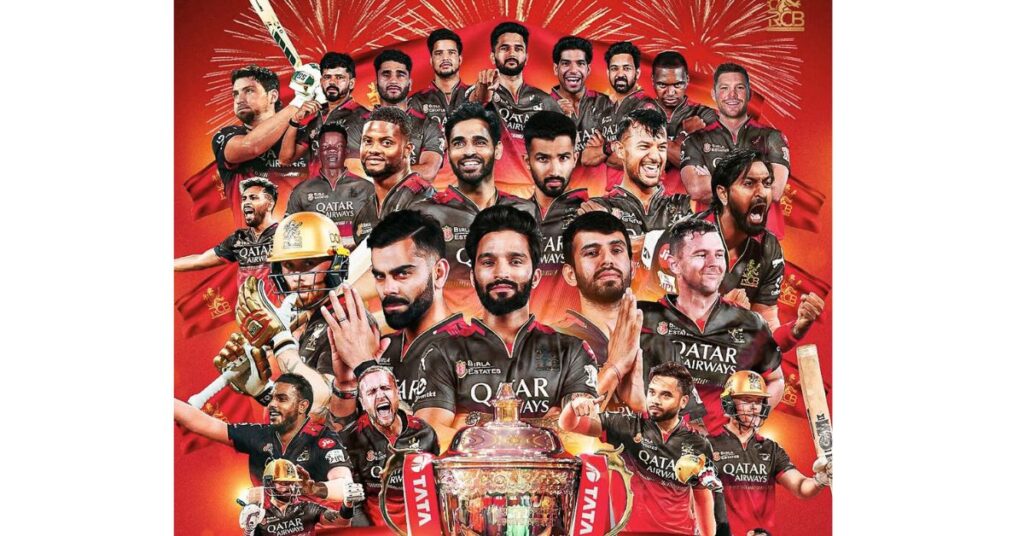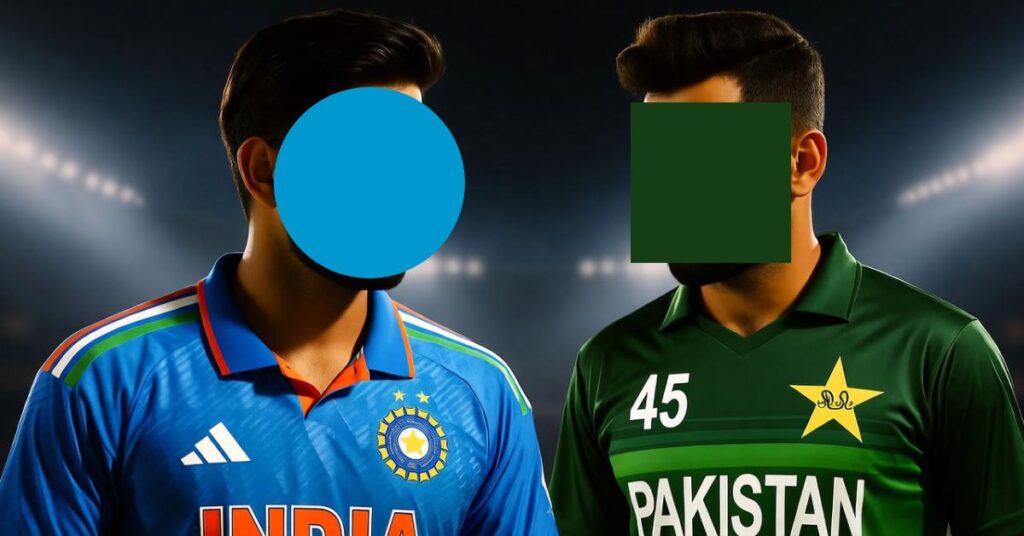Harrdy Sandhu’s cricket career began with promise and energy. He entered first-class cricket as a right-arm fast-medium bowler and played three matches, taking twelve wickets at an average of 26.00. His pace and skill caught attention, and he later represented the India Under-19 side. Unfortunately, a serious elbow injury forced Sandhu to quit bowling. That setback marked the start of his journey in music and film.
Key takeaways:
- First-class matches: 3
- Wickets: 12
- Bowling average: 26.00
- Economy rate: about 3.35
- Strike rate: roughly 46.5 balls per wicket
With that background, this article explores his playing years, the Harrdy Sandhu cricket stats, his short career arc, what could have been, and ends with a reflection.

Early Development & Entry into Cricket
Harrdy, whose full name is Hardavinder Singh Sandhu, was born on 6 September 1986 in Patiala, Punjab. He grew up as a young bowler in Punjab’s cricket system and showed enough pace and control to earn selection for youth squads. During school and club cricket, Sandhu impressed selectors and gained a place in the India Under-19 side.
As a teenager, he had a clear goal — to become a professional cricketer and represent India. His determination and energy stood out during junior tournaments. Coaches described Sandhu as sharp, confident, and always hungry to bowl the next over. He worked on his line and length, often training for hours in Patiala’s humid nets. He admired fast bowlers such as Brett Lee and Zaheer Khan, modelling his action on them.
At the youth level, Sandhu played a Youth Test against England Under-19. He bowled 11 overs, sent down seven maidens, and gave away just eight runs in one innings, though he didn’t take a wicket in that match. That control reflected his discipline and promise.
Hardy was also part of camps where players like Virat Kohli, Shikhar Dhawan, and Ravindra Jadeja trained. Being around such competition shaped his mindset. Around 2006, he was among the players considered for the Under-19 World Cup. With that, he entered first-class cricket carrying high expectations.
For a young bowler from Punjab, earning a Ranji debut in 2005 was a huge achievement. The domestic circuit was competitive, filled with established players and emerging stars. However, Harrdy approached every match with calm focus. His bowling style combined rhythm and aggression. He relied on swing and seam movement, especially on green surfaces. Teammates recalled his work ethic: staying late in practice sessions, perfecting yorkers, and running in with full intent even in warm-up matches.
Hardy Sandhu Cricket Stats and First-Class Career
Here are the numbers under Hardy Sandhu cricket stats:
- Matches: 3
- Innings bowled: 5 in total
- Deliveries: 558
- Runs conceded: 312
- Wickets: 12
- Best bowling: 3/62
- Bowling average: 26.00
- Economy rate: about 3.35 runs per over
- Strike rate: around 46.5 balls per wicket
- Batting: 11 runs in 3 innings, average 5.50
These numbers show that although he played a few matches, his wicket tally—twelve in three games—was respectable. Sandhu’s economy and strike rate prove he maintained pressure and took wickets regularly in limited opportunities.
He debuted in first-class cricket for Punjab in December 2005, in a match against Hyderabad at Mohali. Harrdy’s last appearance came the same month against Baroda at Vadodara. His first-class stint was brief, but it still left a credible mark.
During these matches, Harrdy displayed patience and control beyond his years. He didn’t rely only on pace; instead, he varied his length cleverly. Against Hyderabad, Sandhu bowled long spells that kept batsmen quiet. Against Baroda, he dismissed experienced players using subtle seam movement. He might not have had flashy figures, but his consistency drew praise from many. Several coaches noted that with time, Sandhu could have matured into a dependable domestic bowler.
In an era when India’s pace bowling was evolving, Harrdy’s skill set fit perfectly. He could swing the ball early, extract bounce, and adjust his angles smartly. Had Sandhu continued, he might have joined India A tours, which often opened doors to the national side. His cricket awareness, attitude, and discipline gave him that chance.
The Turning Point & Why the Cricket Chapter Closed?
In 2007, Harrdy Sandhu suffered a serious elbow injury that ended his bowling career. He was competing for a place in the India Under-19 World Cup squad but narrowly missed out after a selection camp in Pune.
The injury changed everything. He couldn’t bowl without pain, and medical reports suggested surgery would not guarantee full recovery. It was a difficult phase for a young player whose identity revolved around cricket; giving up the sport meant losing direction. For months, he struggled with disappointment but eventually accepted that he needed to move forward.
After the injury, Sandhu stopped playing and decided to focus on singing and entertainment. He trained in vocals for eighteen months and later began his music and acting career. That change was bold and uncertain, yet he approached it with the same dedication he had once shown on the field. One can only imagine how far his bowling might have taken him if the injury hadn’t struck.
He mentioned that he played with future Indian internationals such as Shikhar Dhawan, Rohit Sharma, Ishant Sharma, and Ravindra Jadeja in his early days. That shows the level of competition that was around Sandhu at that time. Facing that calibre of talent early gave him the confidence to perform under pressure, a quality that later helped him as a performer on stage.
Highlights & Notable Matches in the Cricket Phase
Even with limited matches, a few moments stood out:
- In the Youth Test against England Under-19, he bowled 11 overs, bowled seven maidens, and conceded only eight runs.
- While playing for Punjab in the Ranji Trophy, he faced Baroda, where Yusuf Pathan featured and picked up three wickets.
- He once said bowling to MS Dhoni during a selection trial was unforgettable.
Those moments stayed with him. Bowling to Dhoni, who was already recognised for his hitting power, tested his nerve and skill. Harrdy said later that those experiences taught him to focus and to deliver each ball with belief, no matter who faced him.
Sandhu’s first-class performances may not fill record books, but they carry emotional weight. Every wicket and every spell reflected his grit. His short cricket career built the foundation for the discipline and rhythm he carried into singing. Even years later, fans and journalists still refer to his cricket background as a reminder of his versatility.
Analysis of Impact & Career Summary
When analysing Harrdy Sindhu’s Cricket Career, his story follows a clear arc. He began with pace, confidence, and state-level backing. Sandhu caught attention in youth cricket, performed well in limited first-class matches, and showed genuine ability before injury halted his progress. His bowling numbers, average, and strike rate reflected that talent. The small sample size, however, limits how far we can project his potential.
If we talk about Harrdy Sandhu’s cricket stats, he took 12 wickets from 558 deliveries across three matches at an average of 26.00. That strike rate of about 46.5 translates to one wicket every eight overs, which is solid for a fast-medium bowler in Indian conditions. His economy rate of 3.35 was also good for that level. These figures suggest Sandhu could have served Punjab cricket for several seasons.
The injury cut short his growth, pushing him into another field. When you combine what he achieved with what he could have, you see that his cricket career, though short, carried real value. Hardy proved that success is not only measured by longevity but by the intent and spirit one brings to their work.
It’s also worth noting that his approach to preparation, hours in the nets, attention to detail, and physical conditioning, mirrored the mindset of elite athletes. Those habits later made him thrive in music, where consistency and stage performance demand similar focus. His shift from a fast bowler to a performer wasn’t luck; it was discipline redirected.
Why This Story Matters?
This story stands out for several reasons. It shows how skill and early success can still meet unexpected barriers like injury. It also demonstrates how a person can transform their path, turning a setback into a new opportunity. For cricket lovers, it’s a reminder that some entertainers once lived the life of athletes chasing serious dreams.
Harrdy’s story bridges two demanding worlds, sport and entertainment. In both, one needs timing, control, rhythm, and heart. His cricket career taught him patience and composure, while his music career rewarded his confidence and stage energy. Fans often mention how Sandhu’s background as a cricketer adds depth to his personality; he’s grounded, competitive, and humble.
When you look back, Hardy Sindhu’s Cricket Career isn’t just about statistics; it’s about transition, resilience, and courage. It’s about a boy from Patiala who lost one dream but found another without losing his spirit. For Hardy Sandhu cricket stats followers, the numbers form a small part of a much larger story about identity, purpose, and reinvention.
For young athletes, Harrdy’s journey offers perspective. Injuries or failures might end one chapter, but they don’t have to end everything. His example proves that with patience and courage, one can rebuild and even thrive in a completely different field.
Final Take:
Harrdy Sandhu’s cricket career was short but real. He made a mark in the few matches he played and showed signs of growth. The injury cut that road short, yet he carried his cricket discipline into music and acting. That makes his journey from a young fast bowler to a performer both memorable and inspiring.
He reminds us that every setback can hold the seed of a new beginning. His story continues to inspire athletes, musicians, and dreamers alike; those who refuse to stop after one loss.
If you enjoyed reading about the Harrdy Sandhu Cricket Career, look into his old match records and relive those early days before the songs and fame. His path from the cricket field to the concert stage shows that dreams may change form, but the hunger behind them always stays the same.

